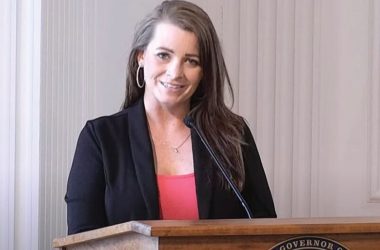WHEELING, W.Va. — For better or for worse, depending on one’s perspective, President Barack Obama’s Clean Power Plan will significantly change America by the year 2030 – if its goal of cutting 32 percent of CO2 emissions from electricity plants becomes reality.
To the dozens of coal industry officials, elected leaders, candidates and concerned members of the public gathered for the West Virginia Coal Forum at Oglebay Park on Tuesday, the effect of the plan will be decidedly negative, as they believe the state is set to lose thousands of jobs and see skyrocketing electricity rates.
“By 2030, if this thing stands, our country will look nothing like this,” Jason Bostic, vice president of the West Virginia Coal Association, said. “If West Virginia is going to continue to mine coal, the Clean Power Plan cannot stand.”
The EPA-established goal for West Virginia is to slash carbon dioxide emissions from power plants by 37 percent by the year 2030. According to the White House, the strategy will save an average American family nearly $85 on an annual energy bill by 2030, while saving consumers a total of $155 billion from 2020 to 2030. Officials said the plan also will prevent 3,600 premature deaths, 90,000 asthma attacks, and 300,000 missed work and school days.
However, Mountain State leaders believe nearly all these health and economic benefits will go to states such as California and New York, which feature little or no coal usage, and typically vote overwhelmingly Democrat in presidential elections.
“He wants to fundamentally change America. He wants to kill coal,” West Virginia Senate President Bill Cole, R-Mercer, said of Obama. “The federal government is doing a great job of killing our industry.”
According to the state Office of Miners’ Health, Safety and Training, West Virginia produced 116.9 million tons of coal in 2014. Just six years earlier in 2008, the year before Obama took office, Mountain State miners extracted 165.8 million tons of the mineral.
“Coal production is down by about one-third since 2008,” said John Deskins, director of the West Virginia University Bureau of Business and Economic Research. “It is unfathomable how quickly this has happened.”
Deskins said the demand for southern West Virginia coal is particularly low, with some of this because the minerals that are easy to reach are now gone. In the year 2000, coal from the southern part of the state outpaced that from the north by a rate of three to one. Now, it is roughly equal.
Bostic emphasized the Clean Power Plan is only one strategy the Obama administration is using to stop coal usage. The Mercury and Air Toxics Standards, an entirely separate set of rules, aim to mitigate mercury pollution from power plants. To comply with the mercury rules, American Electric Power shut down 5,535 megawatts of coal-fired power in June, including the 630-megawatt Kammer Plant in Marshall County.
“We have lost 62,000 megawatts of power because of mercury regulations,” he said when adding all similar plants together.
According to PJM Interconnection, which operates the power grid serving West Virginia and Ohio, just 1 megawatt can power as many as 1,000 homes. So losing 62,000 megawatts could leave up to 62 million homes cold and dark.
Still, Deskins said he believes the state will see its coal production stabilize even with the increased environmental scrutiny. This is because demand for the mineral in China and India continues to grow, so the opportunity for exporting coal will be there.
Cole, however, is not about to forfeit the right to burn coal for West Virginia power.
“There is nobody here who doesn’t want clean air,” he said. “But, at what point is the air clean?”
To read more from The Intelligencer/Wheeling News-Register, subscribe here.




